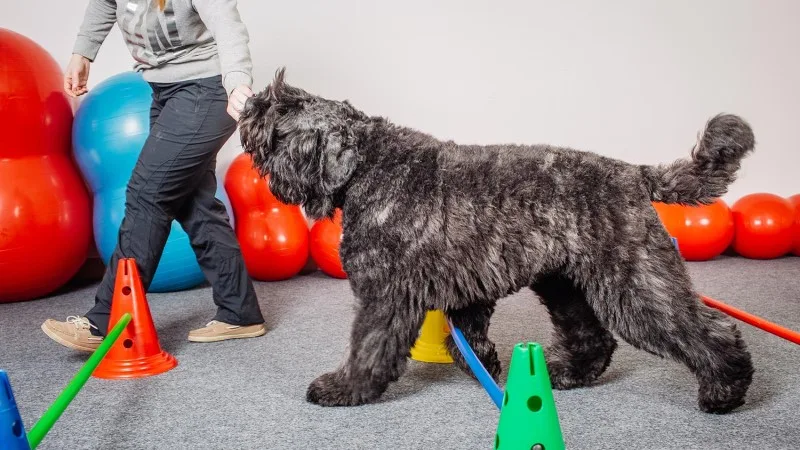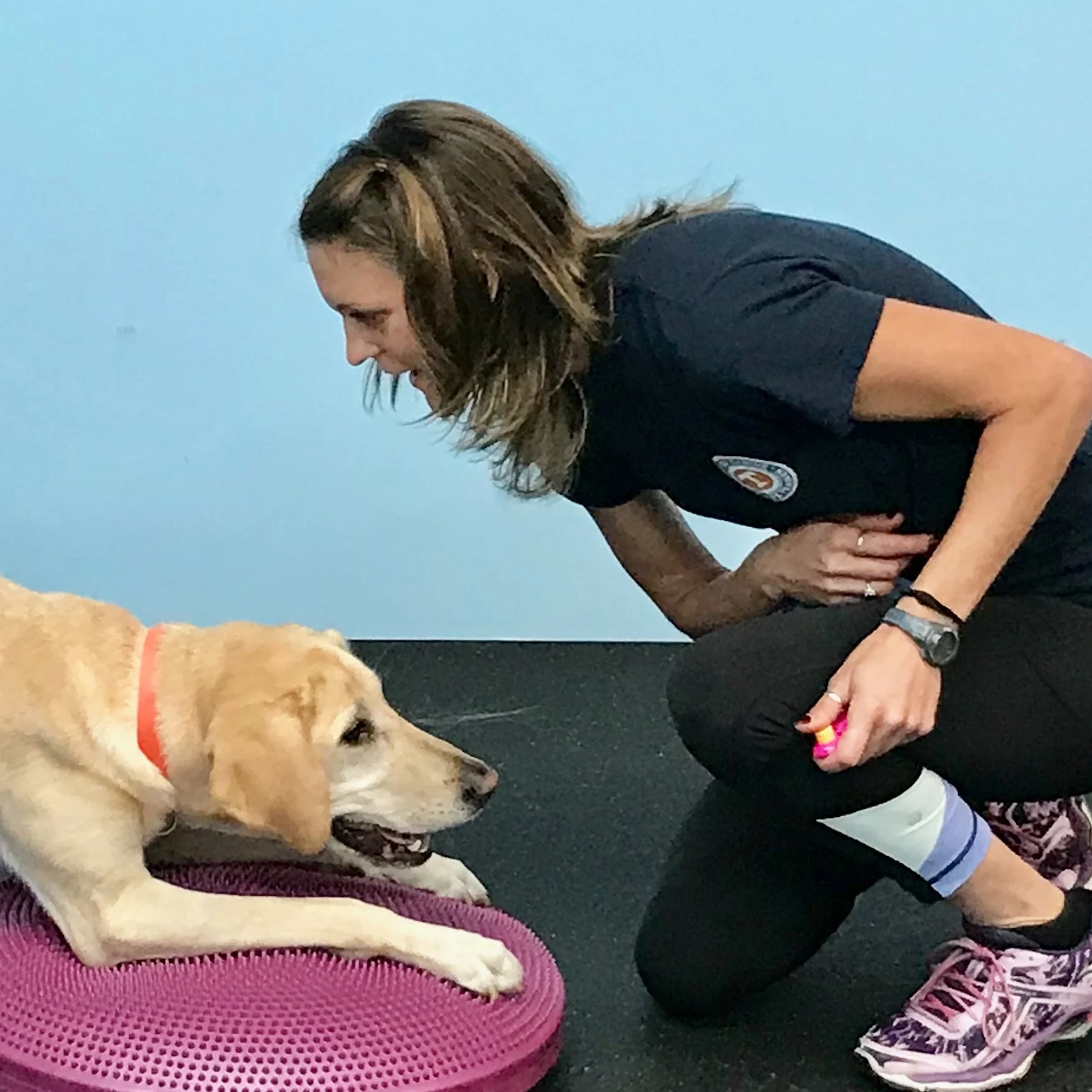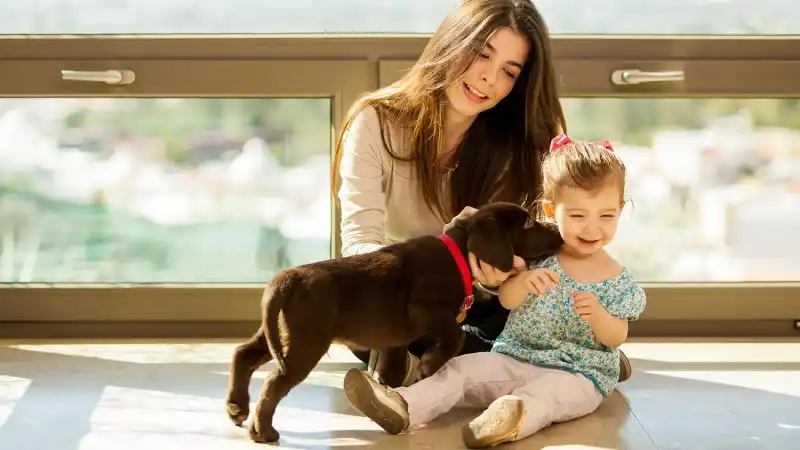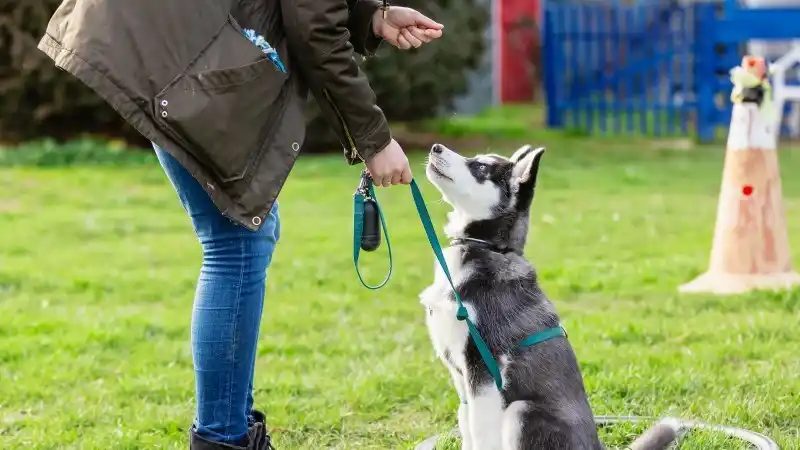Equip Your Dog's Home Gym
Working on your dog's fitness at home can be a fun way to bond with your dog and work on training. Learn about some key equipment to help with your pup's home gym!

When you get home from work, you want to spend some quality time with your dog working on training and fitness. You can do that in the comfort of your own living room – canine fitness is perfect for when the sun isn’t out or the weather is not ideal!
Dog Fitness Equipment and Exercises
Read on to learn about six fun pieces of dog fitness equipment, how you can use them in your home training, and what substitutions you can use!
Flexiness®SensiMat, textured door mat with small bumps, ¼ of a yoga mat, or a hand towel
How you can use it:
Teaching or executing front and hind limb targeting. Your dog places just his forelimbs or just his rear limbs on the object, which shifts weight onto the feet on the floor. If his posture is correct – meaning that his weight is shifted to the limbs on the floor - he will strengthen the limbs and associated stabilizer muscles that are on the floor and engage his core as he balances.
Doing lateral walking. Sideways walking is great for strengthening muscles that work abduction and adduction! The mats can be laid out to be “traffic lanes.” Your dog places his front limbs on one traffic lane and rear limbs on another lane while walking sideways.
Stimulating your dog’s tactile sense of touch and strengthening his paws with gentle textured bumps.
Exposing puppies to positive experiences with new textures and varied surfaces.
Stacking on top of other equipment for more traction! Use the SensiMat, yoga mat, or door mat on top of a step bench or foam pad. You can even stack multiple SensiMats on top of each other to create more height and a more obvious platform for your pup.
Foam balance pad or a phonebook wrapped in duct tape or athletic tape for texture
How you can use it:
Achieving square sits. A square sit means that your dog’s rear limbs are facing forward and not sprawled out into a “V” straddle position. A square sit requires more postural muscles to maintain. If your dog is sitting on a square object, he will generally need to practice his square sit to stay balanced. If the object is slightly unstable, such as foam, the level of difficulty increases, and your dog builds more strength!
Teaching the tuck sit. The tuck sit involves your dog learning to sit a specific way. Instead of using gravity to rock his bottom down to the ground and shuffle his front paws back (a rock-back sit), your dog will keep his front paws planted on the ground and hop his back legs forward into a sit position – that’s the tuck! Dogs often learn this by tucking up to a foam balance pad or across a very small gap between a foam pad and a step bench.
Progressing to performing various fitness skills – limb targeting, sits, downs, stands, and give a paw - on a more stable object to a slightly unstable object. This is a fabulous progression for dogs newer to fitness and for senior dogs! For an extra challenge, have your dog do front or rear limb targeting and give a single paw, which you gently hold for five seconds, at the same time.
Small disc (approximately 14 inches in diameter) or duct-taped old textbook
How you can use it:
Perfect the front and hind limb targeting mentioned above. This is a great hind limb targeting object after your dog has mastered it on more stable pieces. The small disc encourages your pup to keep his hind limbs in a normal, non-straddled position.
Doing “four feet on two objects.” This means your dog has his front limbs on one object and his hind limbs on a second object. You can use the small disc in conjunction with the K9FITbone or foam pad.
K9FITbone or bed pillow
How you can use it:
Front limb targeting with a pushup! You can progress to doing a tricep pushup in which your dog uses a nose touch hold to slowly go into a tricep dip pushup and then pushes back up with control as his nose follows your hand. Keep his shoulders above his wrists. Stay tuned for a future blog about teaching the tricep pushup and how to have correct form!
Hind limb targeting with additional challenges. Keep the hind limbs on the FITbone (or pillow) and do repetitions of rock-back sits, stands, and bows!
KLIMB™, step bench (such as The Step), sturdy rubber kitchen stool, or your living room ottoman
How you can use it:
Completing a plethora of exercises!
Executing puppy pushups! Your dog starts in a sit position, performs a down, and then sits up again. You may need to use a food lure in front of your dog’s nose to lure him from the down to the sit position – often dogs are only used to doing the sit position from a stand. When your dog is seated, ensure there is room on the platform for him to move his front limbs down and forward so he may lie down – have your dog adjust his position if needed.
Challenging your pup with an incline or decline to do position changes such as sit, down, and stand. If the platform is long enough for your dog to completely lie down, you can do puppy pushups on an incline or decline by placing an object – such as your foam pad or a duct-taped book - under one end of the platform.
Cavalettis, golf clubs on tennis shoes or soup cans, agility jumps with a 2-inch bar setting, or foam pool noodles
How you can use it:
Walking your dog across the row of straight or slightly curved cavalettis to create core and limb strength and enhance proprioception.
Configuring the cavalettis into different set ups - a circle, serpentine, or infinity pattern adds to the fun!
Teaching your dog to crawl under cavalettis is an amazing full body workout.
Why Choose Canine Fitness
Besides being a blast, doing canine fitness helps keep your dog at an appropriate weight, physically fit, and mentally challenged. A tired dog is a good dog, right? Doing fitness exercises with proper form can help prevent injuries and ensure your pup recuperates faster when he does get injured. Just as humans check with their physicians before starting new fitness routines, dogs’ owners should check with their veterinarians before proceeding. If you see any changes in your dog’s health or notice any discomfort, stop the activity and contact your vet.
To find classes near you or to learn more about how to safely use your equipment, find a Certified Canine Fitness Trainer (CCFT). A CCFT can guide you in program design and in the proper number of repetitions and sets per exercise.

Jasey Day holds the Certified Canine Fitness Trainer (CCFT) credential through the University of Tennessee. She is a member of the Bobbie Lyons K9FITteam - a team of compassionate canine fitness instructors who actively teach others and continually expand their own knowledge. Since 2004, Jasey has taught a variety of workshops and classes on the following: Puppy, Canine Good Citizen/Family Pet, Advanced Family Pet, Canine Fitness, Canine Swimming, Rally, and Agility. In addition, Jasey has earned over 60 titles in Dock Diving, Agility, Rally, CGC and Trick Dog. Jasey has worked full time for the American Kennel Club since 2007 and teaches at Care First Animal Hospital in Raleigh, NC. Jasey’s Labrador Retrievers spend their free time hiking, training, and snuggling with Jasey.
READ MORE ARTICLES

